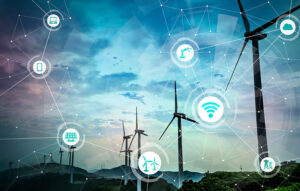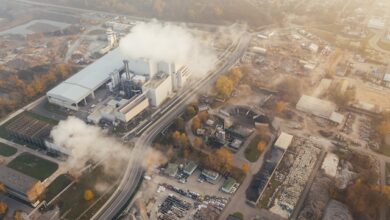The Role of Technology in Combating Climate Change: Promising Solutions and Limitations

Introduction
Climate change is one of the most pressing global challenges of our time, with far-reaching and severe consequences on the planet’s health, ecosystems, and human societies.
Further, The world is already experiencing the impacts of climate change, including rising sea levels, extreme weather events, and melting ice caps. To address this crisis, the international community must take urgent action to reduce greenhouse gas emissions and promote sustainable development.
However, Technology has a significant role to play in combating climate change by enabling the transition to a low-carbon economy, increasing energy efficiency, and supporting sustainable development. This article explores the promising solutions and limitations of technology in the fight against climate change.
Promising Solutions
Renewable Energy Sources
Renewable energy sources are very important because they can provide energy without burning fossil fuels. Fossil fuels such as oil, coal, and natural gas release harmful substances into the atmosphere when they are burned.
Further, The amount of carbon dioxide released into the atmosphere is higher than it should be. For instance, if a barrel of oil is burned, about 20 kilograms (kg) of carbon dioxide is emitted. Burning wood releases about 1 kg of carbon dioxide per cubic meter (m).
Moreover, The most common energy sources are fossil fuels, nuclear fission, and nuclear fusion. A renewable energy source is one that can be replenished naturally and without causing harm to the environment.
Importantly, Fossil fuels are formed when dead organisms and plants are buried under layers of rock. Fossil fuels are a limited resource. They are also highly polluting. They also emit carbon dioxide, sulfur dioxide, nitrogen oxide, and other greenhouse gases. They also contain radioactive materials such as radon gas and plutonium that can harm human health.

Energy Efficiency Technologies
Improved energy efficiency technologies, such as efficient lighting and appliances, building insulation, and smart grids, can help reduce energy demand and reduce emissions.
For instance, CFL (compact fluorescent lamps) use much less electricity than incandescent bulbs. It is also a good idea to purchase LED lights. They have low energy consumption. They also last longer than conventional bulbs. They can easily be installed into existing lighting systems.
Additionally, It is also possible to make your own LED lighting with some simple materials. This will save you a lot of money, especially if you install them in your house. Another way to reduce the energy consumption of your home is to use smart grids. Smart grids are a way to use electricity in the most efficient way.
Further, The way this works is that the smart grid will use less energy when the demand for energy is low. When the demand is high, the smart grid will provide more power. By maximizing the energy efficiency of homes, offices, and industries, we can significantly reduce our carbon footprint.

Carbon Capture and Storage (CCS)
CCS is one of the ways that we can reduce global warming. It uses the same technology that people use to store oil underground. They drill holes and inject chemicals into the ground to capture carbon dioxide. The chemicals act like magnets and pull the carbon dioxide molecules to the bottom of the hole.
Further, The chemicals then react with the carbon dioxide and form a solid mineral. They then pump the solid minerals back up to the surface, where they are put into storage. Some countries are planning to invest billions of dollars into CCS projects to reduce their greenhouse gas emissions.
For example, the Canadian government is going to invest over $20 billion into CCS. The U.S. government has committed to investing about $15 billion into CCS.
Moreover, Many other countries are also investing heavily into CCS projects. If more companies adopt this technology, more countries will begin to use it. CCS can be useful for a number of industries. For example, it can be useful for industries that produce power.
Green Transportation
The development of electric vehicles, alternative fuels, and public transportation can significantly reduce emissions and promote sustainable mobility. These measures can make a difference in our lives.
Further, Let’s think about the transportation sector and how we can make it greener. First, we should think about how we can use alternative fuels in our vehicles. These include propane, natural gas, and biofuels. These alternatives can reduce fuel costs while reducing emissions.
In addition to above statements, We should also think about ways to minimize the carbon footprint of our vehicles. One method of doing this is to use public transportation. A few states in the U.S. are already investing in public transportation, which includes buses, trains, and taxis.
Moreover, Some are using solar panels and wind turbines to generate energy. We can use these green technologies to create cleaner and safer transportation. We should use hybrid vehicles to reduce harmful emissions and pollution. The energy from these hybrids can come from both petroleum and electricity.
Importantly, Another alternative to using gasoline is ethanol. It is made from corn and can reduce the amount of pollution created during production.

Limitations
Cost
There are many technologies that can help us to cut greenhouse gas emissions. Unfortunately, some of these technologies are very expensive to deploy and maintain.
Additionally, The average cost per ton of CO₂ emitted using energy from fossil fuels is about 50 US Dollars, which is three times more than the average cost of reducing GHG emissions using renewable energy sources and energy efficiency technologies.
Further, The cost of using CCS is also much higher than the average cost of using renewables and energy efficiency technologies. There are many costs that need to be considered when deciding whether or not to invest in new technologies. One of the biggest costs is the capital cost.
Moreover, This is the money that will be needed to build and install the technology that will reduce GHG emissions. The cost of maintenance and electricity is also included in the total cost of deployment.
Importantly, The total cost of installing and maintaining the technology is usually equal to the capital cost plus the energy used to run it. If the technology needs a large amount of capital to build and install, then it is probably not cost effective.

Intermittency
Some renewable energy sources, such as wind and solar are intermittent, meaning they do not provide a consistent supply of energy. This intermittency can create challenges for power grids and require additional infrastructure to store energy for times when renewables are not available.
Additionally, Intermittency creates challenges for utilities because they must make sure that there is always enough electricity to meet demand and because they must maintain an adequate reserve of energy to ensure a stable and reliable electrical supply.
Further, The challenges are multiplied during periods of high renewable energy generation, such as the late evening and early morning hours.
Importantly, There are several different solutions to address these challenges. One way is to increase energy storage capacity, such as using batteries to store excess energy during peak hours. Another option is to use power generated from solar or wind sources during off-peak hours.
However, these solutions may result in higher electricity prices for consumers. There are other methods to deal with intermittent generation.
Technical Challenges
Carbon capture and sequestration (CCS) involves using the earth’s natural carbon-absorbing capacity to store carbon dioxide underground in geological formations. This can be done by injecting a substance into the earth that is capable of absorbing carbon dioxide.
Afterward, the substance can be extracted and sent back to the surface for processing and storage. The process is called carbon capture and sequestration. Carbon capture and sequestration (CCS) is still in its early stages of development.
Further, Scientists and engineers are still trying to figure out ways to develop CCS technology. There are concerns about the safety and environmental impact of underground storage. There are also technical challenges associated with capturing, transporting, and storing carbon dioxide emissions.
Moreover, The technology used to capture the carbon dioxide may be energy intensive. For example, the process may involve using a large amount of electricity to separate carbon dioxide from flue gas.

Conclusion
Technology has a significant role to play in combating climate change by enabling the transition to a low-carbon economy, increasing energy efficiency, and supporting sustainable development.
As I mentioned above, there are limitations to technology, including high costs, intermittency, and technical challenges. To address climate change, we must embrace a comprehensive and coordinated approach that includes policies, regulations, and incentives to support the deployment of promising technologies and overcome their limitations.
However, By working together, we can create a sustainable future for ourselves and for generations to come.



